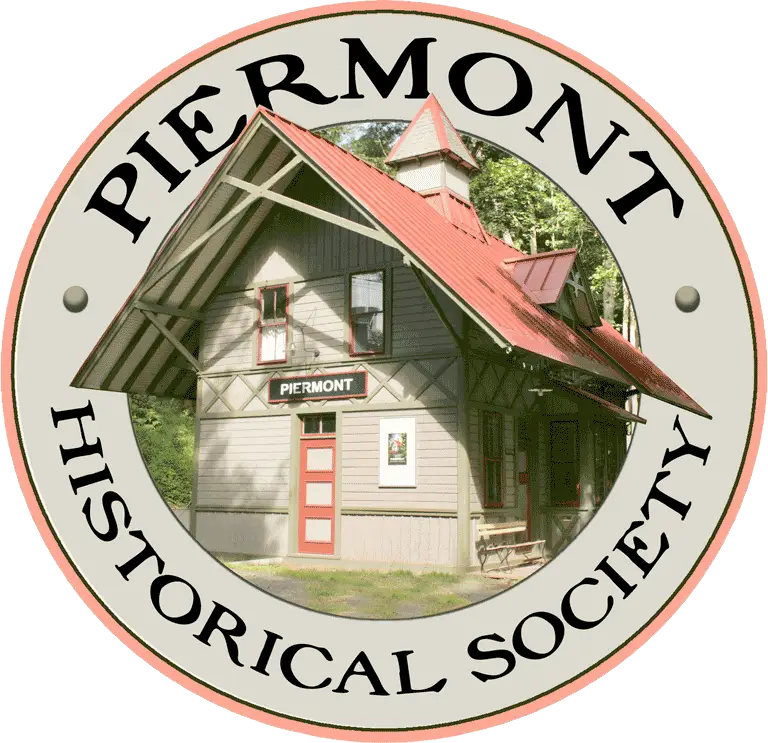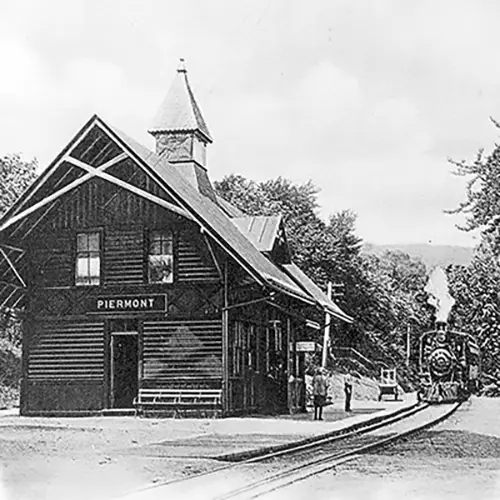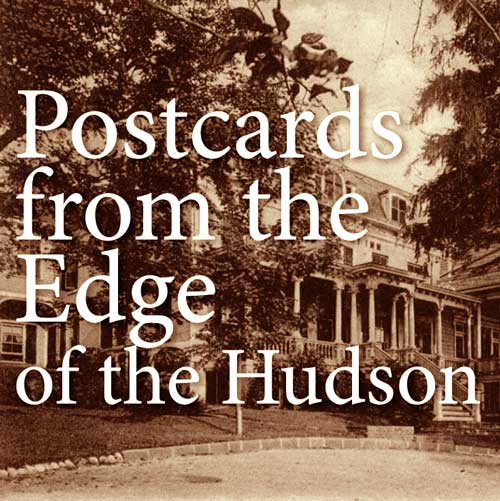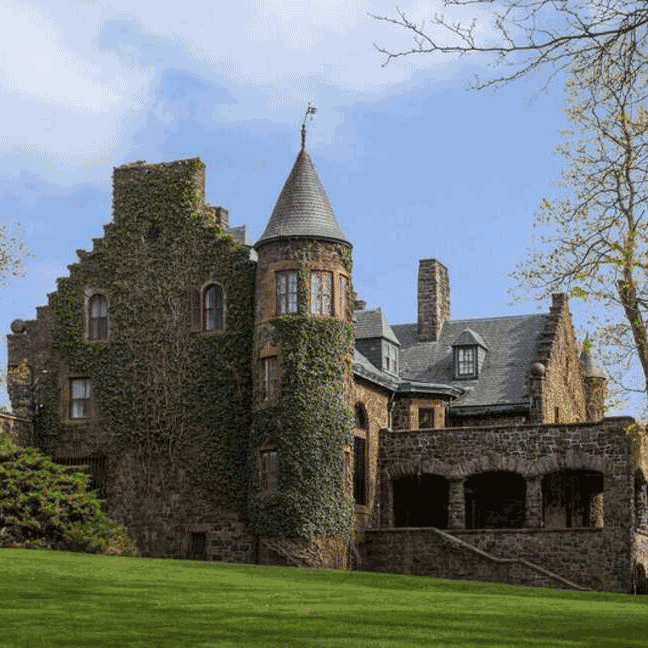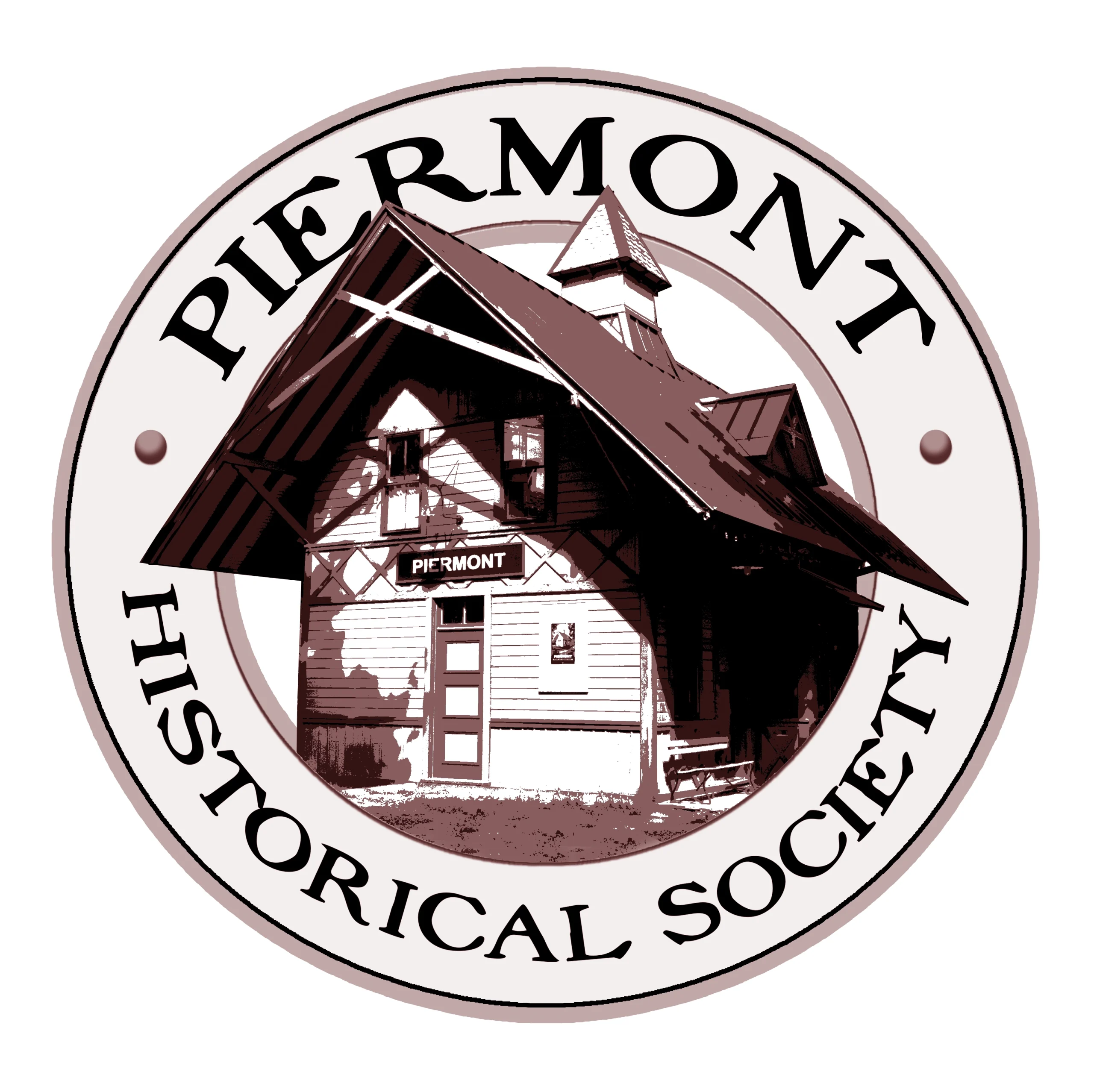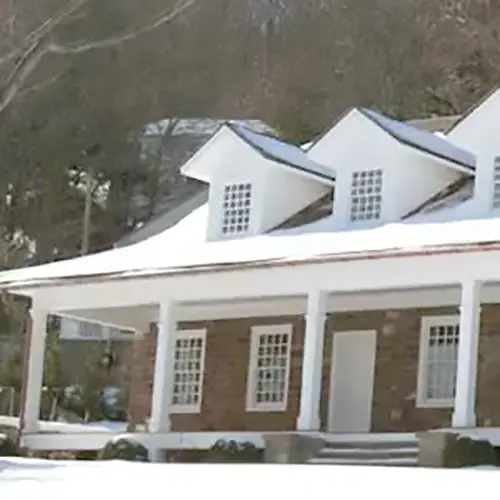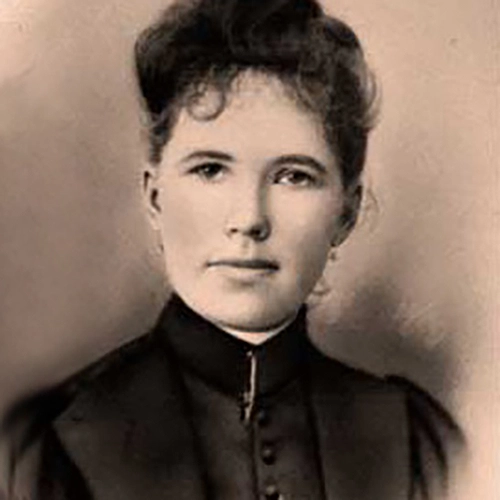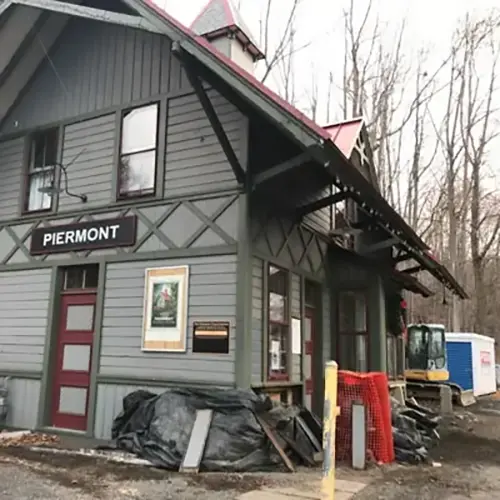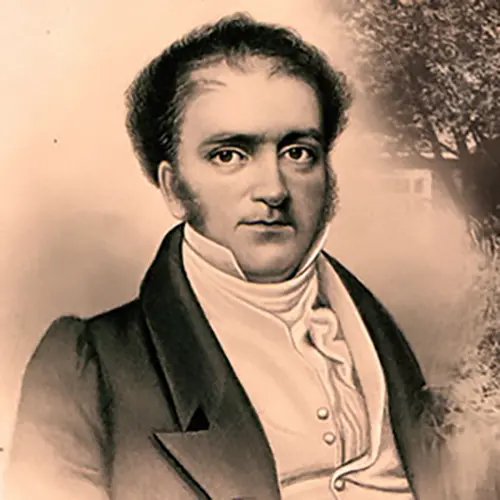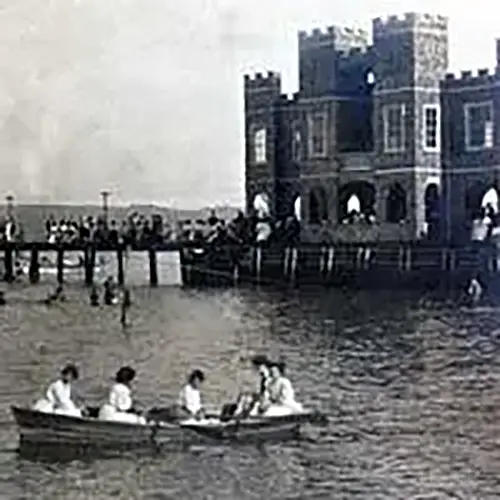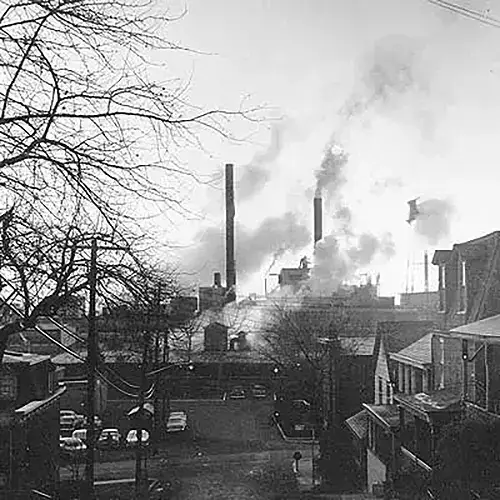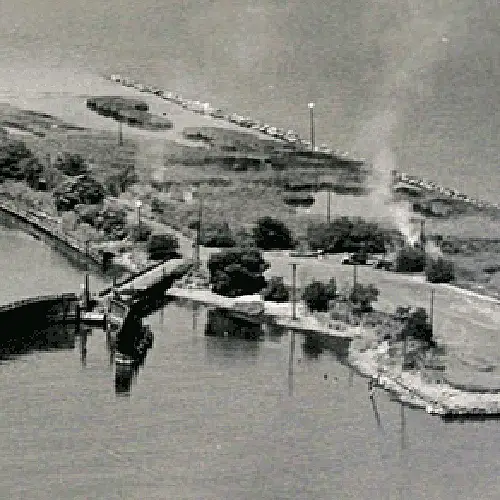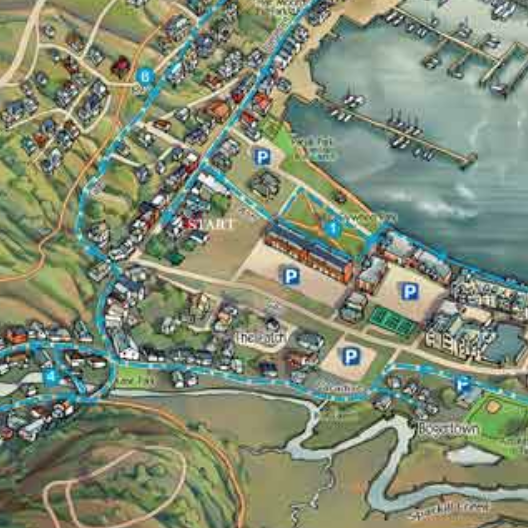The Pier - The Watchfires

Building The Piermont Pier
The development of the Erie Railroad required filling almost 100 acres of the Hudson River to construct a 4000-foot long pier that extended almost halfway across the river.
By 1838, a strong and stable foundation for the railroad buildings and tracks was created. This infrastructure changed the very nature of Piermont, preparing the ground for commercial and passenger use of trains, steamboats and ferries that decades later would lead to Piermont’s industrial age with the construction of the paper mill. More importantly, during WWII, more than a half million soldiers left from the pier for the European theatre from the nearby 1,365-acre Army debarkation camp in Orangetown, Camp Shanks. Soldiers also returned directly from Europe to the pier after the war. (Learn More About Piermont and WW II here.)
Current use of this infrastructure is no less important today, where the picturesque pier houses condos, provides bucolic walks, fishing, cycling, sports events and also serves as a veterans’ memorial and the location of the watchfires every Memorial Day weekend.
The Piermont Historical Society has produced a video, narrated by Tom Chapin, entitled Piermont and Its Role in World War 2: Last Stop USA, It’s a compelling and moving look at Piermont’s role in World War II. Our Video includes several interviews of local residents and their memories of Piermont during the 1940’s. The video is available for sale at the Piermont Train Station and here at our online store.
The Watchfires
Every Memorial Day on the end of the Piermont’s pier, massive logs are piled nearly three stories high and are lit for 24 hours. The fires are lit not only in Piermont, but also along the ridge of the Palisades. They symbolically light the way home for those soldiers who have died in all wars and conflicts of the United States. The Rockland County Vietnam Veterans started the tradition of watchfires on the pier in 1987.
The use of watchfires originated with General George Washington, who would light bonfires along the ridge line of the Palisades to warn his soldiers of the movements of the British Army in the Hudson Valley. He finally used them to signal the ceasefire at the end of the Revolutionary War.
